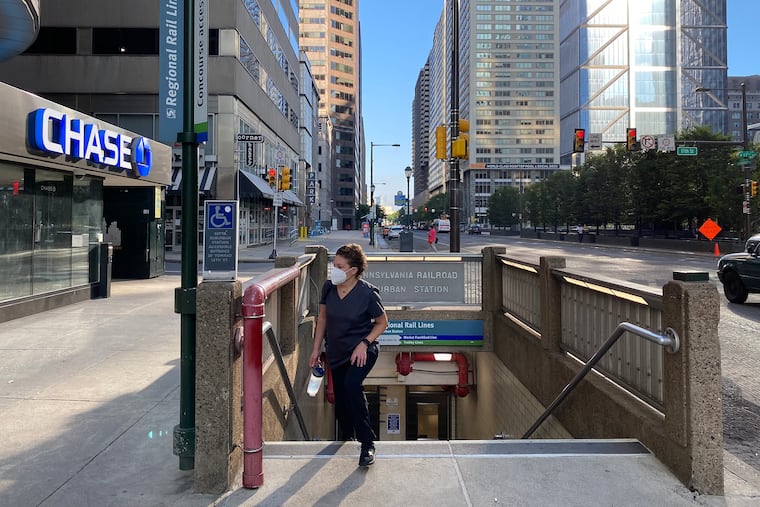A first glimpse of SEPTA’s new double-decker Regional Rail cars, under construction in China
SEPTA bought 45 coaches in 2017, before the pandemic slashed Regional Rail travel and created supply chain snarls abroad.

A Beijing Youth Daily photographer got a factory peek at some of SEPTA’s coming attractions: double-decker passenger cars on order for the Regional Rail fleet, freshly painted in the familiar red-white-and-blue livery.
After the newspaper posted photos of the rail cars to its Facebook page over the weekend, they circulated on social media, shared by train enthusiasts and curious SEPTA customers— audiences with some overlap.
SEPTA bought 45 coaches from the American subsidiary of the China Railway Rolling Stock Corp. in 2017, before the coronavirus pandemic slashed Regional Rail travel and created supply chain snarls for shipments from China. The photos show the first two cars of the order on an assembly line in Tangshan — expected to begin arriving in the Philadelphia area early next year.
A post on Twitter features three images: The first is being built for another transit agency that wasn’t identified. The two other photos show SEPTA’s new double-decker Regional Rail cars.
They were supposed to get here last year for field testing, SEPTA officials said. But COVID-19 brought mass lockdowns in China, idling factories at times.
» READ MORE: A broken supply chain has SEPTA waiting for microchips, paint — and train cars
In March 2017, SEPTA awarded a $138 million contract to CRRC MA, the U.S. subsidiary of the state-backed enterprise, which has built 404 cars for metro Boston’s T subway system and has orders from Chicago, Los Angeles and other American cities.
At the time, Regional Rail ridership was up 52% since 2000 and the authority needed more carrying capacity. The bi-level CRRC cars accommodate 133 passengers, compared with 100 on current stock.
Regional Rail carried a daily average of 55,791 passengers in June, according to Key fare card data. That’s the best month since the start of the pandemic, but it’s still only 49% of average ridership in June 2019, the data show. Bus and city transit ridership have recovered much faster.
“We think we are still going to need that capacity,” SEPTA spokesman Andrew Busch said. “Demand is going to continue to grow.” In addition, he said, the agency is working on a redesign of Regional Rail to offer more frequent service, beyond traditional Center City commutes.
The first four railcars — testing prototypes — will initially arrive at CRRC’s Massachusetts factory for more work to comply with the federal Buy American law. Their arrival date in Pennsylvania is unclear, but Busch said it’s likely in early 2023.
Inspectors from a Chinese company under contract to SEPTA are monitoring the work in Tangshan, and authority engineers visit when travel conditions allow. Officials in Philadelphia knew that two of the cars were nearly done, but the news photos apparently provided the first look for them, too.
Workers in China have started another 20 coach car shells, which also will go to the U.S. facility.
Most of SEPTA’s fleet will remain 231 Silverliner IVs dating from the Ford administration and 120 Silverliner Vs bought in 2010-11; both models have their own engines in the first car.
The double-decker passenger cars, which are designed to fit under bridges and in tunnels on the SEPTA network, are pulled by locomotives.
When the CRRC coaches get here, SEPTA will have 90 coaches. It bought 15 Siemens ACS-64 electric powered locomotives in 2018.
“It’s good to get new blood into the fleet,” Busch said.